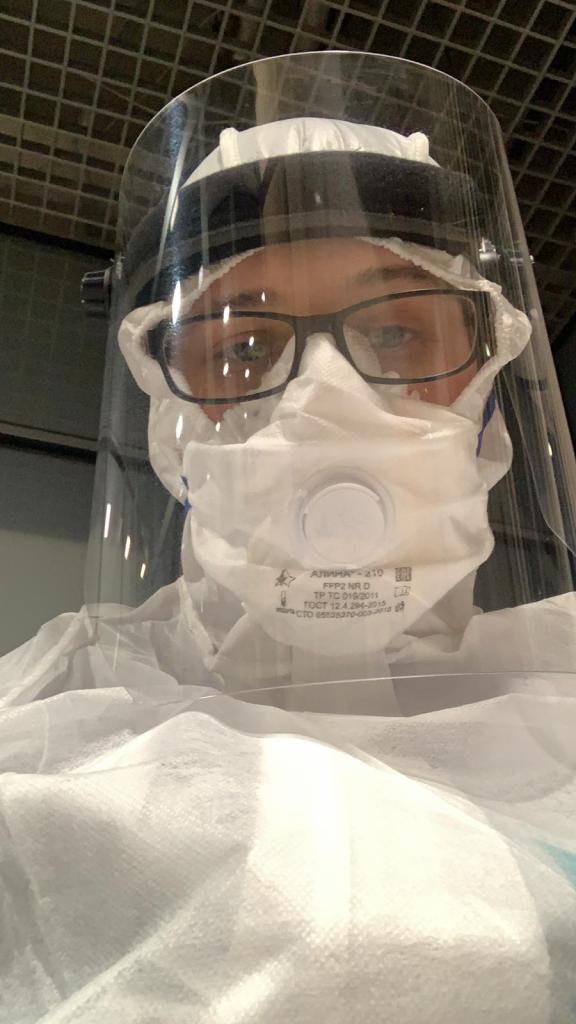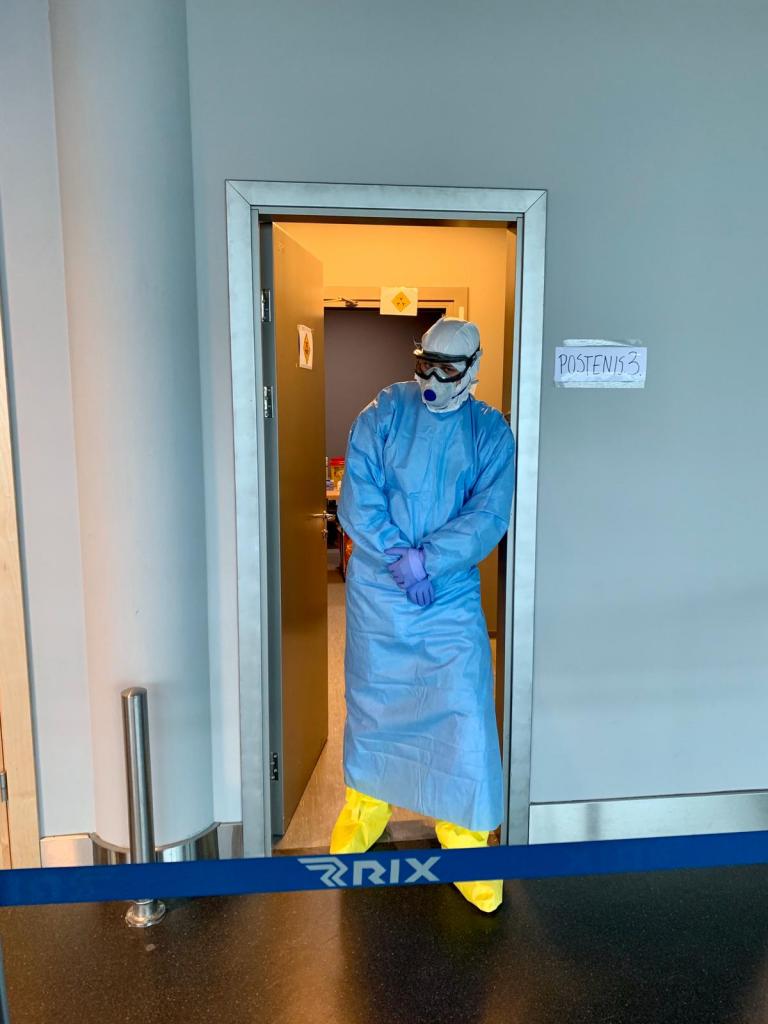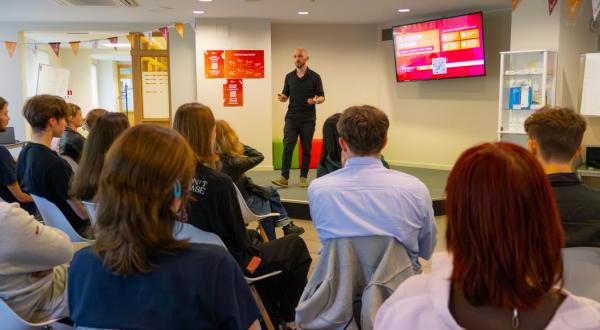A Volunteer’s Diary: We Worked Almost Non-Stop
My name is Pāvels. I am a second-year student at the Faculty of Medicine of Rīga Stradiņš University (RSU), and I have also been working as a assistant physician at the State Emergency Medical Services (SEMS) for two years. After the state of emergency was declared, I was one of the first to apply for training to work with coronavirus patients.

It was only after this preparatory training that I and other volunteers were appointed to work at a mobile sample collecting point. I was also sent on house calls seeing as I had the necessary experience. My tasks were the same wherever I went: to get patients’ medical history, to examine them and to take samples for analysis – swabs from the nose and mouth.
Since in-person classes at the university have been moved online, I am more flexible in my ability to respond to requests by the SEMS lead doctor and to work at one of the checkpoints. This is important work for two reasons – this is great experience for me personally, but it is also crucial to quickly identify the people who are infected in order to top the spread of the infection. This does not, however, free me from the amount of work I have to do at university and I study whenever I can.
The airport
The day begins. My first place of work as a member of the special COVID-19 team was at the Riga International Airport on the last days that it was open. I got up at 4:00 so that I could arrive at SEMS at 5:30. We were met by a vehicle that took us to our destination. It wasn’t hard to get up so early because over time, you get used to any conditions doing work like this. Our day started at 6:30 with a briefing. We then changed into our work gear. At 8:00 we received the first passengers arriving from abroad.
The first patients. Our team’s work was divided into three stages: the first person had to collect basic data, the second examined patients and listened to their complaints, and in the third stage, where I was working, I had to verify information and collects material samples for analysis. We had no right to force anyone to give samples. Only those who wanted to sought help, as well as those who had some symptoms: a cough, shortness of breath, fever, headache, etc. Some people joked about our outfits, but in most cases their main concern was how quickly they would be able to get the results.
We worked almost non-stop as there was not much free time between flights. The first big break came at around 14:00. We ate, rested a bit and continued to work. The next break only came at around 20:00. All our conversations were about how the situation and what might happen. No one was analysing their personal feelings.
I have to admit that fear started to creep in, because I was in contact with a huge number of people – you realise that some of them are definitely infected, but you don’t know who. You keep trying to remember whether you’ve done everything right from a safety point of view, whether or not you have made a mistake somewhere, or whether you’ve touched your face at some point.

Personal protective equipment. We wore personal protective equipment (PPE) almost all the time, except for during our lunch break. This consisted of a special protective suit with an additional surgical gown, a respirator, protective goggles and boot covers. You can imagine how hot it was to wear all of this! Plus breathing through a respirator is difficult and our goggles would fog up. I had to get used to certain inconveniences. On the other hand, this equipment gives you a feeling of safety – with protection like this the chance of infection is very low. I reminded myself of this at times when frightening thoughts crept in.
Until the lights were turned off. The last flight arrived at around 3:00 the next morning. We were the ones who closed the airport. At 4:00 the work vehicle took us back to SEMS. I was home at around 5:30 in the morning. The next evening, I went to the airport again and the cycle started all over again. This was a very difficult day and I felt really uncomfortable – we were on our feet for more than ten hours. The only reason I wanted to go back to the normal SEMS team a few days later was the monotonous work. A good team can, however, make up for this.
Home visits
The work of the special teams that go to people’s homes was different. I worked alone with the SEMS driver. We started at 8:00. I changed into my PPE, got into the vehicle and went to the location I’d been called to. When I got out of the vehicle at the destination, people around me hurried to take pictures. What several people at the airport did in three stages, I did alone here: collected the medical history, examined the patient and took samples for analysis. I placed the samples I got into a special container where they can be stored for up to five hours. In the vehicle, the driver helped me take the necessary disinfection measures and then called the dispatcher who would give us further instructions on wether to go to the next location, or drive back immediately to the Latvian Centre of Infectious Diseases to deliver the material to the laboratory. My workday ended at 22:00.
Conclusion. I am absolutely calm, I do not feel any panic, I do not rush to buy buckwheat and toilet paper, I do not walk around my apartment thinking about the coronavirus. I simply do my job and adhere to the basic rules of hygiene and safety. I urge others to do this as well and to think more about others. This is the only way that we will be able to stop the spread of the virus.
Related news
 Develop your business skills and bring ideas to life with the B-Space incubation programmeFor RSU Employees, For High School Students, For Students, Innovation
Develop your business skills and bring ideas to life with the B-Space incubation programmeFor RSU Employees, For High School Students, For Students, Innovation


